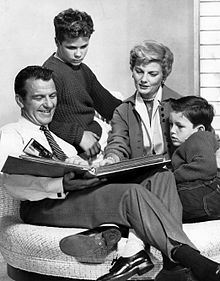[contextly_auto_sidebar id=”nlkSqy50Zn5Bw3CQlhpyfd29maMq78kr”]
ONE of my guiding principles on this site and in the soon-to-be-published book it accompanies is that the creative class it almost entirely embedded within the middle class, and that musicians, writers, artists, etc. are even more exposed to contemporary economic pressures than the average burgher. This is despite the fact that the artists we tend to hear about are typically gazillionaire superstars; the counter-myth, of course, is that artists are gutter-dwelling absinthe sniffers.
So I’m especially gratified to see what’s starting out as a sharp, vividly written and illustrated  series on the Washington Post about “Why America’s Middle Class is Lost.”
series on the Washington Post about “Why America’s Middle Class is Lost.”
Yes, the stock market is soaring, the unemployment rate is finally retreating after the Great Recession and the economy added 321,000 jobs last month. But all that growth has done nothing to boost pay for the typical American worker. Average wages haven’t risen over the last year, after adjusting for inflation. Real household median income is still lower than it was when the recession ended.
Make no mistake: The American middle class is in trouble.
That trouble started decades ago, well before the 2008 financial crisis, and it is rooted in shifts far more complicated than the simple tax-and-spend debates that dominate economic policymaking in Washington.
It used to be that when the U.S. economy grew, workers up and down the economic ladder saw their incomes increase, too. But over the past 25 years, the economy has grown 83 percent, after adjusting for inflation — and the typical family’s income hasn’t budged. In that time, corporate profits doubled as a share of the economy. Workers today produce nearly twice as many goods and services per hour on the job as they did in 1989, but as a group, they get less of the nation’s economic pie. In 81 percent of America’s counties, the median income is lower today than it was 15 years ago.
Why are median wages flat or declining? Why are jobs, in many places — like onetime aerospace hub Downey, CA, where the series opens — not coming back, or only returning with lower pay? What has caused the rise of inequality and why does neither political party seem capable of fixing it? The opening article has valuable personal stories as well as lots of maps and data.
The opening story is called “Liftoff & Letdown,” in reference to Downey’s role in the Apollo moon launch.
(It’s probably not useful for me to point out that those of us on the left — or dwelling in the middle class — have been well aware of the demise of the middle class for years now.)
I’ll try to post on the next two parts of the series, as well.

Your thoughts about how economic conditions have affected the creative class have led me to think more about the many and varied value systems artists use to sustain themselves. Artists can survive poverty, but they can’t survive spiritual destruction. I’m not using the word in a religious sense, but in how the human spirit survives in a world that is defined in purely material terms.
Physical impoverishment weakens. This is then often followed by a spiritual impoverishment that kills. We can describe and define the physical impoverishment, but the spiritual impoverishment is much more intangible. It might even be that spiritual impoverishment is an even bigger problem than physical poorness. It might even be that much of our spiritual impoverishment does not come from physical poverty. How can we demand middle class comfort while rejecting many, if not most, of the (mighty white) values for which the middle class stands?
It would be interesting to try to define this seeming impoverishment of the human soul, how it is and isn’t intertwined with physical impoverishment, and analyze how they both affect the arts and society. This isn’t, of course, a new problem. I think writers like F. Scott Fitzgerald, Albert Camus, J. D. Salinger, Kurt Vonnegut, and Anne Lamott devoted their lives to exploring these problems. In this regard, they might even be seen as following in a tradition of writers like Twain and Dickens.
Maybe artists should work to explain to the working class why there is so much inequality in America today. The results of the recent congressional election were that the poorest cities and counties of the country were the ones that voted against their own economic interests.
And artists might work to explain to working class people that voting is important. The very low voter participation in many areas gives the wealthy more influence than they deserve.
The number of people living in deep poverty (less than $10,000/year for a family of 3) in Philadelphia is equal to the entire population of Salt Lake City and affects 60,000 children who face daily problems with hunger. See:
http://articles.philly.com/2014-09-26/news/54322611_1_deep-poverty-poverty-line-south-philadelphia
Countries that neglect their people and cities neglect the arts.
I also wonder to what extent the creative class is actually a privileged class, of sorts. 60,000 children in Philly facing hunger seems more urgent. I notice that a lot of people in the creative class really don’t give a lot of thought to the truly poor. Could this be another part of the spiritual malaise I discuss above? To what extent did the creative class render itself vulnerable through its own lack of social awareness?
Since progressive politicians (mostly Democratic) have mostly failed at reaching the middle class, could the creative class step up?
The voters who most strongly support Republican policies are elderly, white, rural and small town people. Why don’t they know that the Republican drive for “entitlement reform” means cutting social security and medicare?